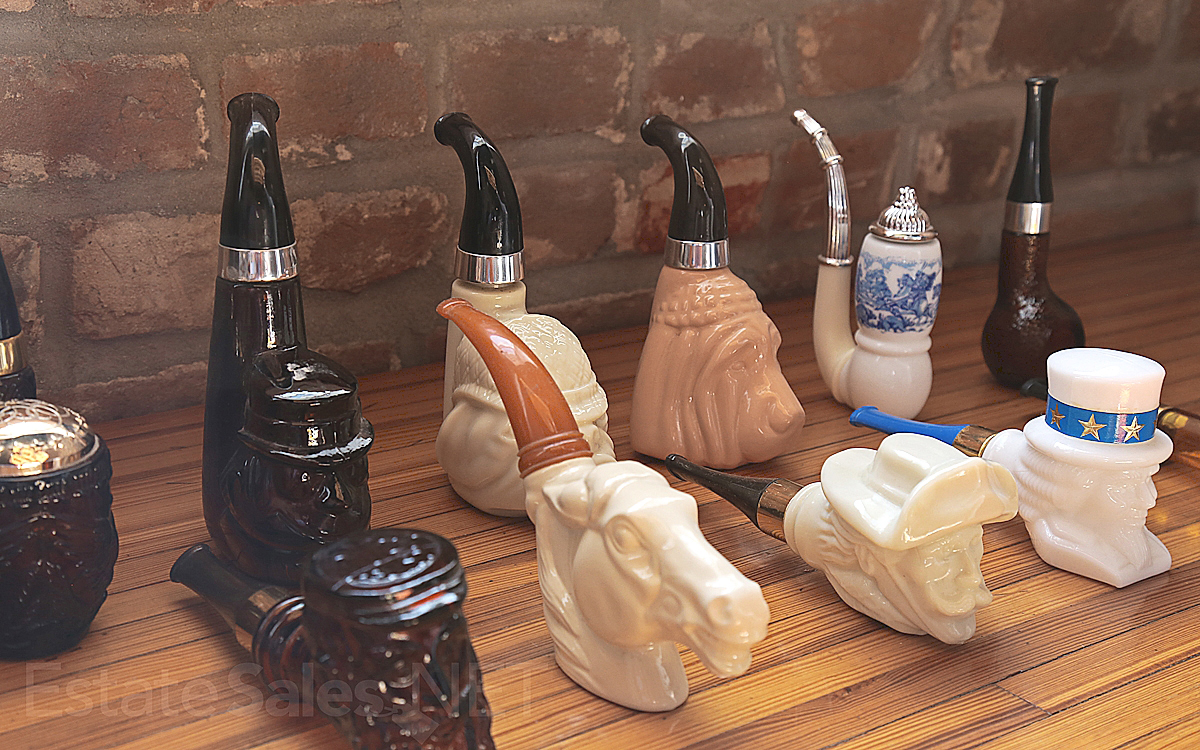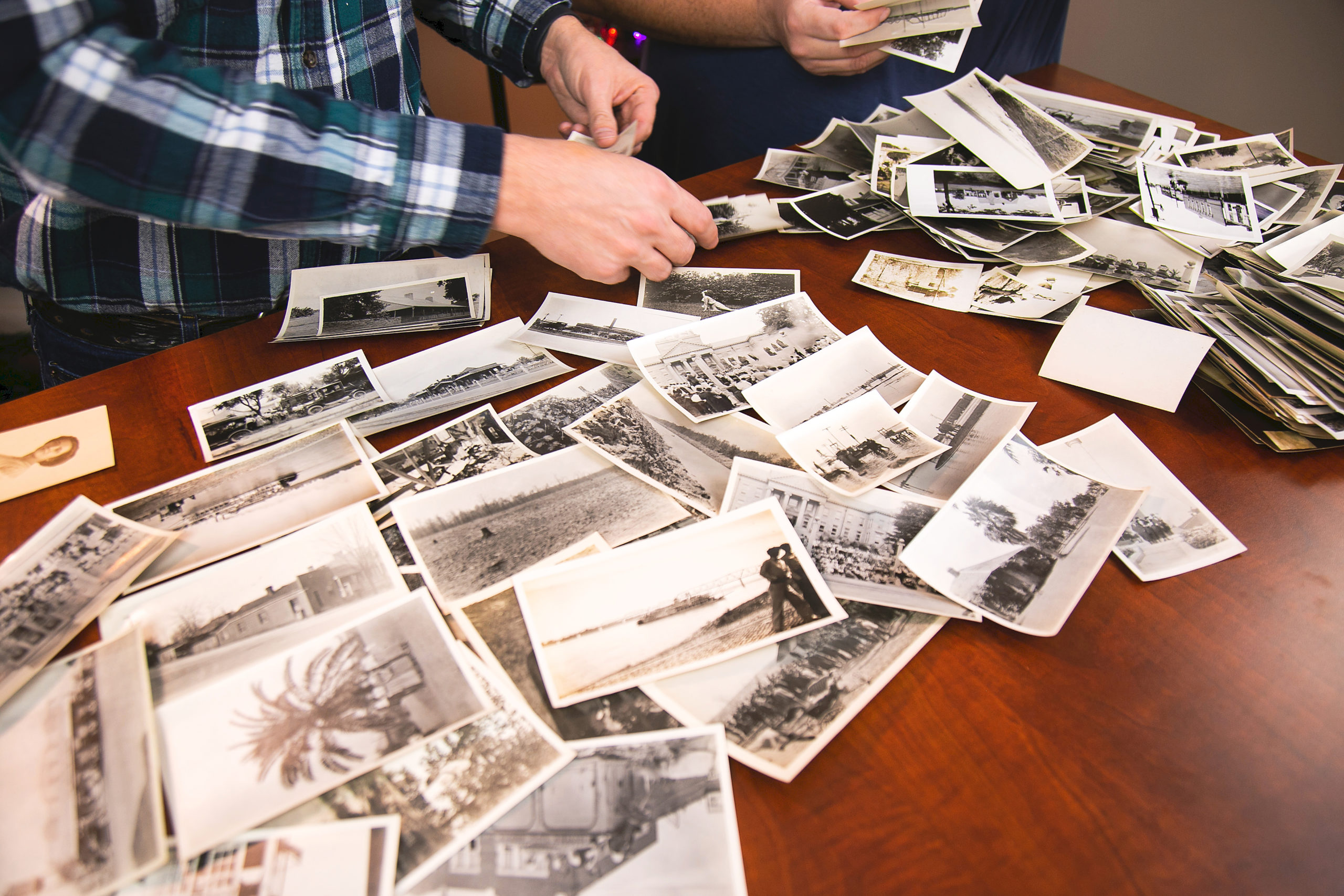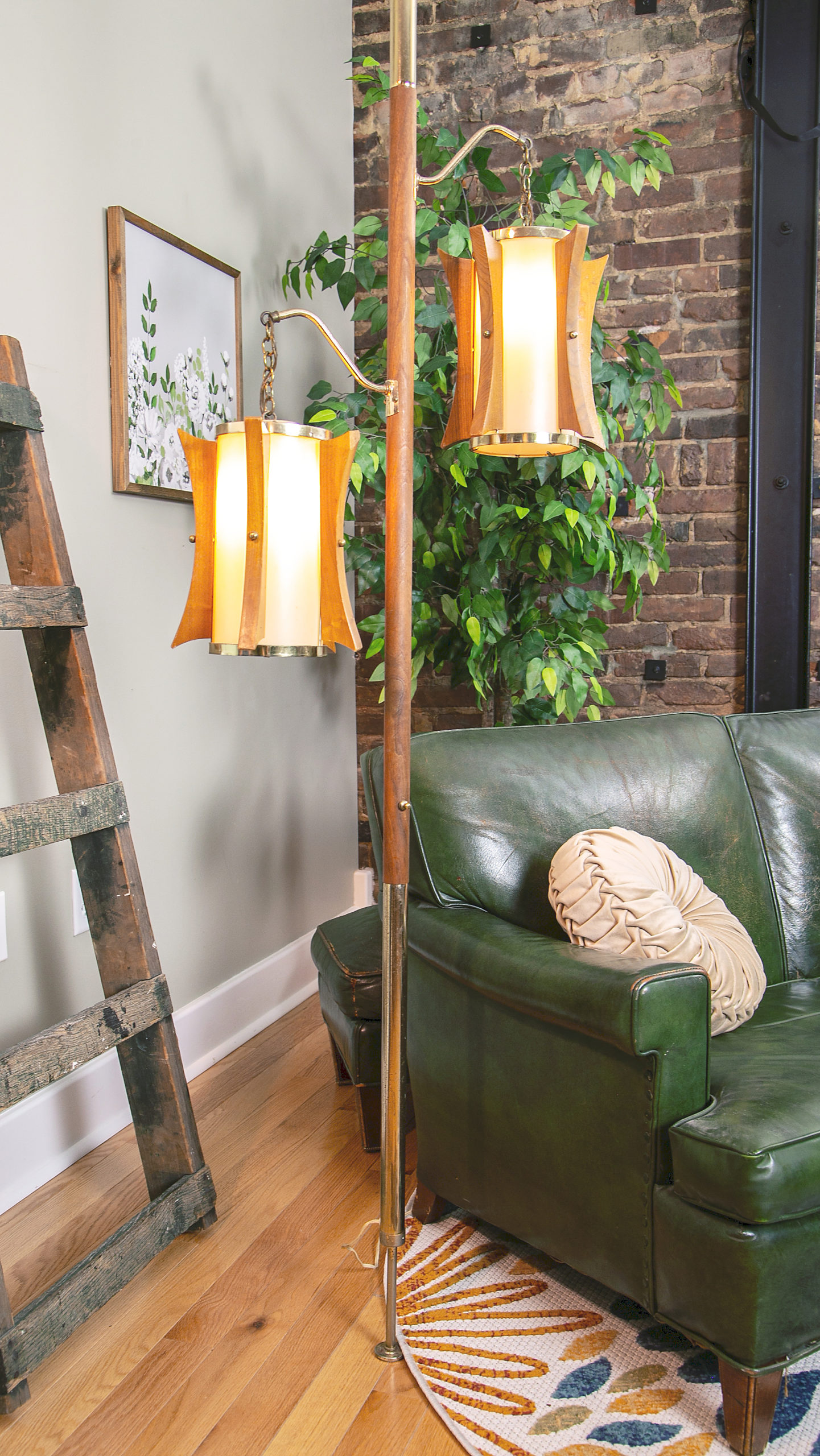
Matthew Ellison is the director of marketing for EstateSales.NET, where he has spent nearly a decade researching, curating and developing content to grow the estate sale industry. He is dedicated to making the estate sale industry as accessible as possible while introducing a new generation to secondhand living. Ellison holds an MBA from Southeast Missouri State University and is a proud girl-dad, musician and history buff who can be found searching estate sales for unique, wacky and weird historical pieces. Antiques and The Arts reached out to him to find out what scratches the itch for secondhand stuff.
You provided the fun fact that you and your wife began collecting Funko Pops as a date night activity and have amassed more than 1,000 characters since 2015. Can you tell us a bit about these pop culture collectibles?
Funko Pops are figurines that represent different pop culture characters from TV series, movies, games, sports, books, comics and celebrities. As collectibles, they often get compared to the Beanie Babies craze from the 1990s. So many people bought Beanie Babies thinking they might be worth a fortune someday, only to find that the market interest depleted over time. Time will tell if that is the case with Pops. The good news is pop culture items are extremely trendy right now. Funko, the brand that makes the figurines, has also done a great job at obtaining licenses for rare pop culture figures that may never have had representation in figure form.
In 2015, my wife and I walked into a little local toy shop in our hometown and they had a wall of Funko Pops. We were instantly intrigued when we saw the Sailor Moon and FireFly Pop figurines because they reminded my wife of her childhood. She grew up in a household that lived and breathed comic books and pop culture, and she watched Sailor Moon on TV, so it was nostalgic to see those figurines at the store. We ended up buying a couple of them.
Not long after, we were in Target and saw one Pop sitting on the shelf that completed the FireFly series we purchased from the toy shop. That find sparked something in us. The thrill of the hunt was exhilarating — much like you get when you estate sale shop — and the rest is history. Since then, we have found different series we like and now we go around searching for figures to complete our series. It turned into a fun date activity for us.
One of the best parts about our hobby is all the collectors we met over the years. The toy-collecting community is full of a diverse group of people. Also, our collection is now worth more than we paid for our car. It has grown significantly in value over the years as the older figures get retired and harder to find. My wife and I never got into collecting to sell or make money. We just enjoyed the quality time, the thrill of the hunt, the community and feeding our dream to build out an awesome pop culture movie room someday in our house with all of the Pops displayed.
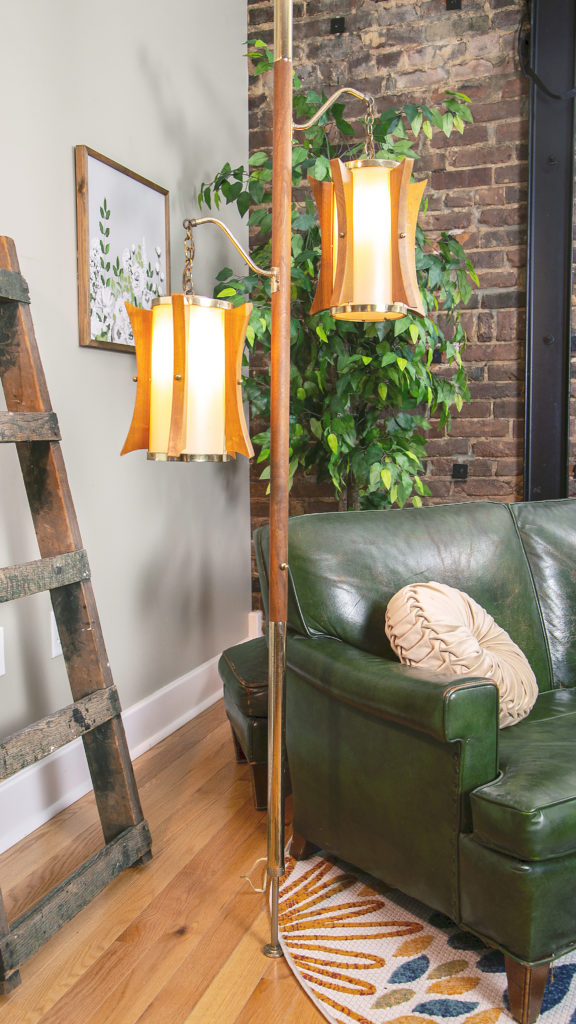
Anything midcentury is hot right now, especially lighting.
What’s the most valuable one in your collection?
The most valuable Pop in our collection is a Harry Potter three-pack of Ginny, Fred and George Weasley that is signed by all three actors that played the roles in the movies.
You surely spend your weekends hitting estate sales. What are some of your favorite finds?
Yes, absolutely! I love found footage and photographs, so I’m always looking for cool, historical pictures. In fact, I recently found a bag of pictures taken around my local town, possibly as old as the 1920s. It’s incredible to see what the city looked like back then. I also love old 8mm and Super 8 footage if I can find it. Most people keep that stuff for their family’s keepsake, but sometimes it has no one to go to, or no one wants it, so it gets sold in sales. I hope to find a new life for it, so it doesn’t die with the homeowner.
I’m also a music lover and have found a ton of unique instruments throughout my years of shopping at estate sales, including a 1958 Wurlitzer 700 electric piano, which has the same inner workings as the piano used on Ray Charles’ 1959 hit “What’d I Say,” a 1986 Fender Squier Japanese Jazz Bass and a book from the Percussive Arts Society International Convention, which is covered in autographs that were collected from drummers and music industry titans, such as the late Vic Firth.
What do you do when, say, you find a vintage but unplayable acoustic guitar or mandolin in a closet?
The first thing I do is try and figure out what kind and brand it is. Knowing the manufacturer can go a long way in helping you determine information about the instrument, especially with older instruments. There are several factors that determine their overall condition, including any missing parts, cracks in the wood and the integrity of the strings. Some repairs, like resetting the neck, are more costly while others are affordable and can preserve the value of the instrument.
I usually pass on vintage instruments that are missing wood or are seriously damaged, unless it is a rare piece. However, if everything checks out with the condition of the guitar or the mandolin I will then try and determine value.
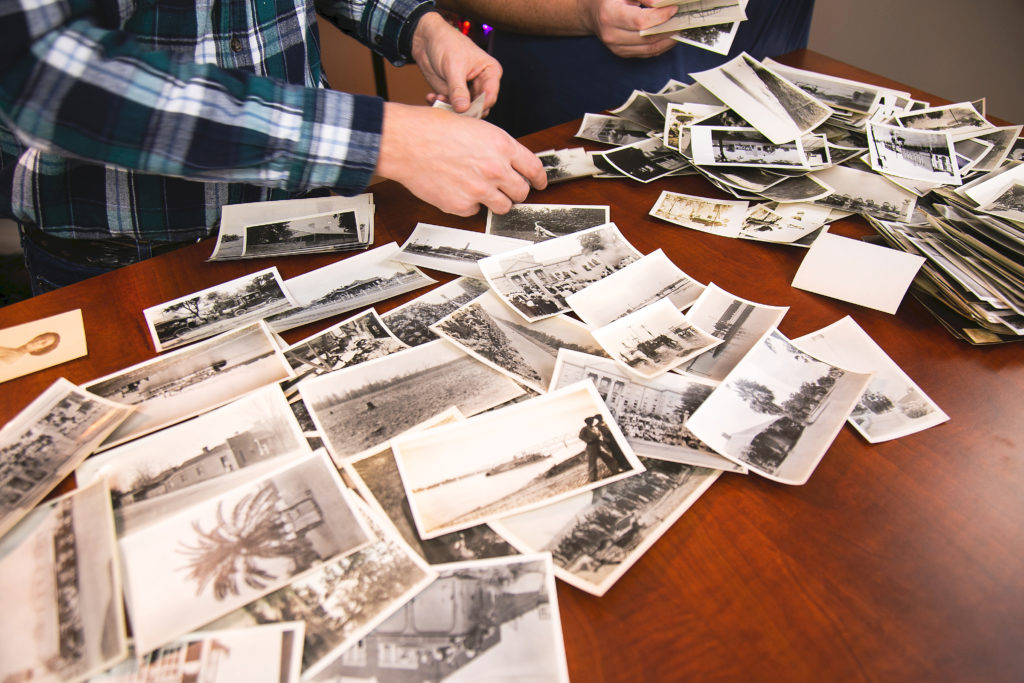
“I love found footage and photographs, so I’m always looking for cool, historical pictures,” says Matt Ellison.
Why are there so many upright and grand pianos on the secondhand market?
In my opinion, it has to do with the boom in home ownership after World War II when many soldiers came home and started families. The piano was viewed as a status symbol and a staple of the household. As time went on, people’s interest in learning to play the piano as well as having such a big piece of furniture in their house waned. Those that purchased or inherited them wanted them out of their house, so they started hitting the secondhand market.
Today, parts of old pianos are becoming art pieces and furniture in houses. Think tables, wall hangs and benches. They’re also used by the professional music community as props on stages. At many live concerts where you see someone playing an upright piano on stage, it is usually a completely disassembled piano with a modern keyboard set down into it. They retain the look and coolness of playing a wood piano but have the stability and consistency of digital keyboards.
What advice do you have for someone who wants to get the best price for an inherited set of dinnerware, silver or the like?
The first thing they’ll need to do is determine if the dinnerware is indeed made of silver. I recommend looking for silver marks, hallmarks or maker’s marks. You can often find examples online. From there, I recommend looking up the current price of silver so they know how much their items cost, at minimum, for their makeup. I also encourage people to do their research on the brand that made the silverware and the prices of similar pieces. Once they’ve done all that, I suggest hiring an appraiser who can help confirm the items’ values and potential avenues for selling them.
You mentioned one category bound to be encountered by downsizing boomers — found footage of life in a previous era from obsolete 8mm film and Super 8 cameras. What can be done with those?
One of the best ways to preserve the memories found in old films is to send the footage to a company that specializes in converting film to a digital format. This is the most efficient and cost-effective way to save the footage and share it with others. Another option is to donate the found footage to a local historical society for its archives. They are usually more than happy to have it on hand. Of course, if you have an interest in found footage like me, you can always purchase an 8mm or Super 8 projector to watch the old film.
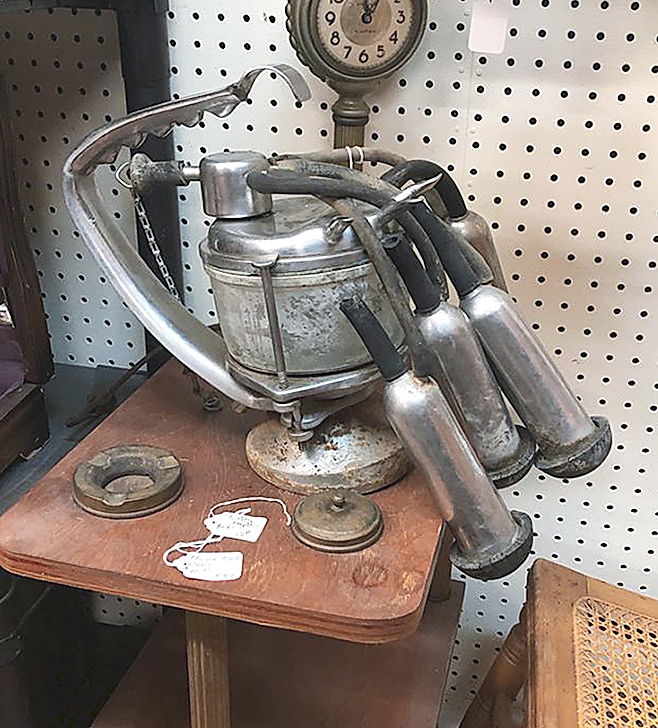
Its days on the farm may be over, but this vintage milker makes an interesting sculpture.
What are some hot collecting areas that adventurous estate sale shoppers can look to?
Anything midcentury is hot right now as well as rattan furniture. Also, comic books, Lionel and American Flyer trains, records and vintage clothing remain popular and valuable to today’s consumers.
Have eBay and some other online platforms cut into the estate sale business?
In my opinion, no. If anything, these platforms have actually grown the industry. There is an entire reseller economy centered around estate sales. Many people make a living by buying items from in-person estate sales and selling them through platforms like eBay, Etsy and even on Instagram shops.
The purpose of an estate sale is to sell as many of the items in the house as possible in a relatively short period. Whether a company is achieving this through selling partially online, all online or all in person, it doesn’t matter.
Some insider tricks to help folks find their next “deal”?
Don’t be afraid to dig when visiting an estate sale. Some of the best “deals” are hiding under everyday things. Look in drawers, under tables, on garage shelves and in cabinets for long-forgotten pieces that have been stashed away. Don’t be afraid to use Google Lens or a quick Google search to find like items when out hunting. This can help you determine how good of a deal the item really is. Also, download the EstateSales.net app and look at the pictures before you head out to the sale.
— W.A. Demers

